28 Mar April 2023 Yellowbill

Editor’s Note
The Yellowbill is published monthly except in June, July and August. It is edited by Robert Snow (rsnow@fresnoaudubon.org) except for the Member Photos section, which is edited by Clayton Dahlen (mc_dahlen@yahoo.com). Archived issues are available at https://fresnoaudubon.org/the-yellowbill/.
President’s Message
Greetings, FAS members and friends. I hope this message finds you safe in the wake of the storms we’ve experienced here in the San Joaquin Valley and Sierra Nevada.
Spring is upon us and soon we will be seeing colorful migrants such as Bullock’s Orioles, Black-headed Grosbeaks, and Western Tanagers. With spring migration well underway, Fresno Audubon has many exciting events on the horizon!
Here is what we have scheduled for April 2023:
- Saturday, April 8: Spring Raptorthon 2023, numerous locations, 6:00 AM – 5:30 PM
- Wednesday, April 12: Birding at Sumner Peck Ranch, 8:30 AM – 12:30 PM
- Saturday, April 15: Spring Potluck at Sumner Peck Ranch, 11:30 AM – 3:30 PM
- Sunday, April 16: Introduction to Birding class at the River Center, 9:00 AM – 12:00 PM
- Wednesday, April 26: Birding at Ruth McKenzie Preserve, 8:00 AM – 12:00 PM
Anyone interested in these and other upcoming events can check out the FAS event calendar for more information and links to registration: https://fresnoaudubon.org/event-calendar/.
Saturday, April 22 is Earth Day, and Earth Day Fresno is putting on a celebration on the Fresno City College campus from 10 AM to 4 PM. This is a free, family-friendly outdoor festival that will feature various educational exhibits and activities. Fresno Audubon will be running one of the educational booths. Be sure to stop by and say “Hello”!
We would like to remind everyone of the current requirements for attending FAS in-person field trips and classes. We are no longer requiring that participants be fully vaccinated. Masks are now optional for all FAS outdoor events. We still require that participants must not be exhibiting any symptoms of Covid-19. Registration is still REQUIRED for all in-person field trips, and participants must register individually. We appreciate your understanding and cooperation.
I want to take another moment to talk about Spring Raptorthon 2023, which FAS is excited to take part in on Saturday, April 8. Spring Raptorthon is an annual fundraising event put on by the Hawk Migration Association of North America (HMANA). For this event, teams from all over the nation pick a date between March 1 and May 31 to go out and count raptors (and other birds, if they choose) to raise money for HMANA and other conservation organizations. The team I have assembled, named the CenCal TanagerHawks, will be counting raptors (and other birds!) at numerous locations between Fresno and Madera, such as Friant Cove, the River Center, Lost Lake (if it has re-opened), Madera County side of Millerton Lake, and Road 208. 75% of the funds we raise will go to HMANA to support their raptor monitoring projects in North and Central America, and the other 25% will go to Fresno Audubon to support our bird education classes and programs. Here is the link to donate on behalf of the CenCal TanagerHawks: https://www.hmana.org/product/cencal-tanagerhawks/. We are inviting members of the public to join the CenCal TanagerHawks as we count birds on Saturday, April 8. It should be a great day, and even if you cannot join us for the entire day, that is perfectly okay! If you are interested, please register here: https://fresnoaudubon.org/event/spring-raptorthon-2023/?instance_id=1184. Here is a link to more information about Spring Raptorthon on HMANA’s website: https://www.hmana.org/raptorthon/.
Thank you again to all of those who attended the March 14 general meeting. Avid birder and photographer Robert Groos talked to us about his adventures in Zambia, showing stellar photos and videos of birds and other wildlife. To say the least, it was a fascinating presentation! If you missed Robert’s talk and would like to view the presentation, you can find it and other general meeting presentations on our YouTube channel at https://www.youtube.com/@FresnoAudubon.
The next FAS general meeting is scheduled for Tuesday, April 11. Dr. Daniel S. Karp will be talking to us about harmonizing bird conservation with food production in farming landscapes. For links to registration, please check FAS social media, email announcements, or the FAS event calendar at https://fresnoaudubon.org/event-calendar/.
I’d like to remind all of you that FAS is on Facebook, Instagram, and YouTube. Please give FAS a follow if you haven’t already! This is a great way to engage with us and stay in the loop!
To end this message, I’d like to share some photos I recently took of a Tree Swallow out at the River Center, where there are currently several pairs scouting nest sites in sycamore trees. Note the clean white throat and underside, the deep, dark yet iridescent blue-green on the backside, the short tail, longish angular wings, and the short, flat beak. Male Tree Swallows are often brighter than their female counterparts, but some females are nearly as bright as males. Tree Swallows are cavity nesters, taking to nest boxes, woodpecker cavities, and natural cavities. A similar-looking species that is also a cavity nester is the Violet-green Swallow. Though similar, there are some sure ways to tell the two species apart. While both have a clean white throat and underside, the Violet-green Swallow has a white patch above and behind the eye not seen in Tree Swallows. Additionally, the Violet-green Swallow has an emerald green backside and a violet rump with white on either side. Enjoy the photos of the Tree Swallow!
Please take care of yourselves!
Rachel Clark
Fresno Audubon Society President

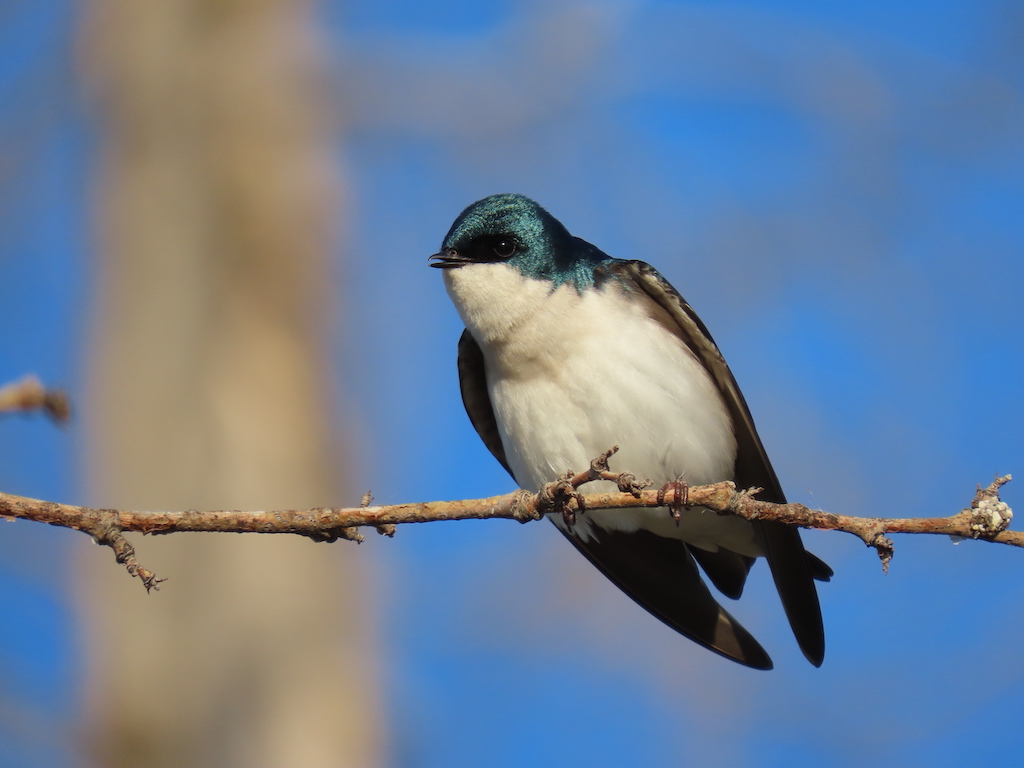

April General Meeting
Daniel S. Karp
Harmonizing Bird Conservation with Food Production in Farming Landscapes
Tuesday, 11 April 2023

Speaker Bio
Program Description
A critical challenge for this century is transitioning towards sustainable farming systems that simultaneously produce food and conserve wildlife. Yet conservation scientists and practitioners have traditionally fixated on protected areas and overlooked opportunities for conserving wildlife alongside us in working landscapes. Daniel uses ecological research to develop strategies for co-managing agriculture for bird conservation, crop production, and food-safety outcomes, both in the tropics and here in California. For this talk, Daniel will first discuss how climate change and habitat conversion are affecting tropical bird communities, and how shifts in farming practices may mitigate their combined impacts. Then, Daniel will shift his focus to California agricultural systems, where birds play multiple roles on farms, not only consuming crops and spreading foodborne diseases, but also consuming crop pests. Daniel will outline his lab’s work striving to find ways to manage California birds and take advantage of the benefits they can provide farmers, while minimizing harms to food production.
To receive the Zoom link for the meeting, please register here.
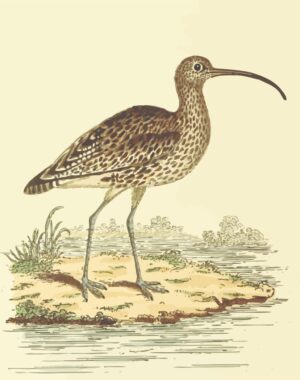
General Meeting Speaker Schedule
Following is the schedule for future speakers. This schedule is subject to change due to cancelations. Check the FAS events calendar for the latest information: https://fresnoaudubon.org/events.

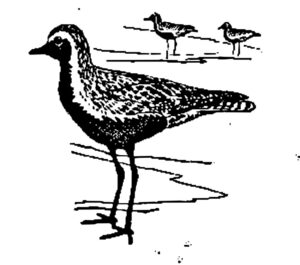
Introduction to Birding Classes at the River Center

Spring Raptorthon 2023
Saturday, 8 April 2023
Fresno Audubon will be taking part in Spring Raptorthon 2023. What is that, you ask? Spring Raptorthon is an annual fundraising event put on by the Hawk Migration Association of North America (HMANA). For this event, teams from all over the nation will choose a day between March 1 and May 31 to go out and count raptors, and other birds if they would like, to raise money for HMANA and other conservation organizations. FAS president Rachel Clark has assembled a core team, named the CenCal TanagerHawks, who will perform their count on Saturday, April 8, 2023. Some of the spots the team is planning to visit include the River Center, Lost Lake, Friant Cove, Millerton Lake (Madera County side), and Road 208 between Highway 41 and Road 211. We invite members of the public to join us as we count at the various locations. Even if you are not an expert birder and even if you cannot join for a full day, that is perfectly okay. As the team will be moving to different locations throughout the day, please reach out to Rachel Clark by phone at 515-357-0122 before coming out to meet up with the group. The team will be counting from 6:00 AM until approximately 5:30 PM. The day will begin at 6:00 AM in the Friant Cove parking lot in Friant (36.9911183,-119.711653).
Of the funds raised by the CenCal TanagerHawks, 75% will go to HMANA to support their HawkCount database, Raptor Population Index project, raptor conservation efforts, and HawkWatch fund to support hawk watching in North and Central America. The other 25% will go to Fresno Audubon to support our bird education classes and programming. Link to donate on behalf of the CenCal TanagerHawks for those wishing to do so. The donation site will be on the HMANA website. People can either donate a flat amount, or can pledge a certain amount per species detected by the team. Anyone wishing to donate by check should reach out to Rachel Clark at tanagergirl@gmail.com.
Those wishing to join the CenCal TanagerHawks at any point during the count are required to register here: Registration is limited to 30 participants.
Those joining the group should bring hats, sunscreen, binoculars, snacks/lunch, plenty of water, and should dress in layers. If you have any questions, please reach out to Rachel Clark by email at tanagergirl@gmail.com.
Here is a link to more information about Raptorthon from the HMANA website: https://www.hmana.org/raptorthon/.

Spring Potluck Lunch
Saturday, 15 April 2023
Sumner Peck Ranch
To register for the potluck, click here.
To register for the potluck, click here.
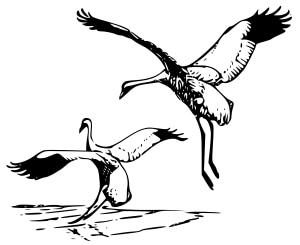
Earth Day Fresno
Saturday, 22 April 2023
Fresno City College
This free outdoor festival will feature educational exhibits, a bike clinic, all-electric vehicle test drives, children’s activities, local cuisine and much more. Non-profit organizations, government agencies and local businesses will provide information, goods and services related to sustainable living and environmental stewardship. For more information please see https://earthdayfresno.org/.
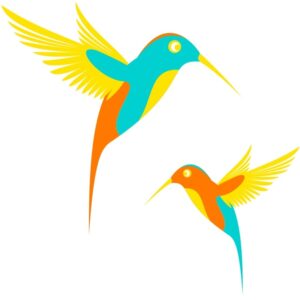
April Field Trips
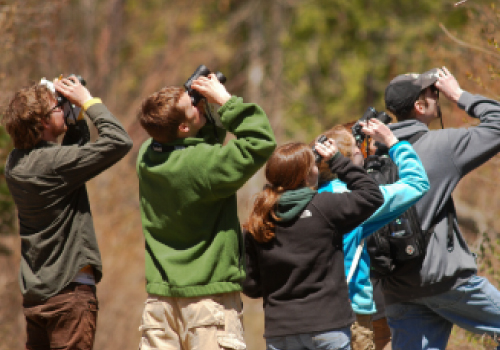
FIELD TRIP GUIDELINES DURING THE COVID-19 PANDEMIC ⏤ Fresno Audubon Society is offering field trips during the now-endemic COVID-19, subject to the following rules. With the continuing risks of exposure and potential illness, everyone must determine their own level of risk aversion. The CDC has recommended that masks should be optional when outdoors. It has been shown that a well-fitting N95 mask protects the wearer for several hours from an infectious dose of virus, so anyone concerned about exposure can choose to wear a mask near others if they feel at risk. Following are our current guidelines for our field trips.
- Participants must pre-register individually using the FAS event registration system.
- Participants must self-screen their own temperature before the outing and must not attend if they are feverish.
- Participants must consent to Fresno Audubon Society’s Liability Waiver by pre-registering.
- Social distancing is encouraged.
- Masks are not required, but participants are encouraged to wear a mask whenever they feel the need.
- Some field trips meet up at a central point before traveling to the field trip location. Participants may form their own car pools at these meetup points.
- Participants must contact their trip leader should they test positive for COVID-19 within three days following the outing so that we can notify others who attended the trip.
Wednesday 12 April 2023 ⏤ Sumner Peck Ranch with Susan Heidebrecht
Join trip leader Susan Heidebrecht for birding along the San Joaquin River on the beautiful Sumner Peck Ranch property. It is mostly flat terrain with good trails. The walk will be approximately 1 ½ miles each way. Expect to see a variety of waterfowl, warblers, raptors, Belted Kingfishers, and woodpeckers.
We will meet at the parking area at the end of the drive (do not turn left into the parking lot near the entrance, but drive straight ahead).
Checklist: binoculars, scope, field guide, snacks, lunch, water, sunscreen, hat, dress in layers
If you wish to bring lunch, there is a small picnic area near the parking lot.
Participants should bring snacks, lunch (if desired), water, hat, sunscreen, and binoculars, and should dress in layers. Registration is required for this event. If you have any questions, please reach out to trip leader Susan Heidebrecht at sunheidebrecht@comcast.net or (559)313-1776
Wednesday 26 April 2023 ⏤ Ruth McKenzie Preserve
Birding at the Ruth Mckenzie Preserve
Registration is required for this event.
Join FAS for birding at the Ruth Mckenzie Preserve. The walk is initially fairly easy, along a dirt road that undulates along a stream. After about a mile, the road crosses the stream, and the hiking becomes a bit steeper. We may see enough birds along that mile that we won’t cross the creek. Possible sightings are Acorn Woodpeckers, Lewis’s Woodpecker, Phainopepla, Red-tailed Hawk, Bluebirds, and a nesting pair of Golden Eagles.
Meet at the parking lot at the Sportsman’s Warehouse on Friant Road at 8:00.
Participants should bring snacks, lunch (if desired), water, binoculars, and a hat. Wear sturdy shoes. Registration is required for this event. If you have questions, reach out to either trip leader. Register Here.
Contact:
Maureen Walsh
(559) 706-4980
email: mewnew10@yahoo.com
Wes Beal
(559) 250-2988
email: beal4farms@gmail.com
Wednesday 24 May 2023 ⏤ Elkhorn Slough by Boat
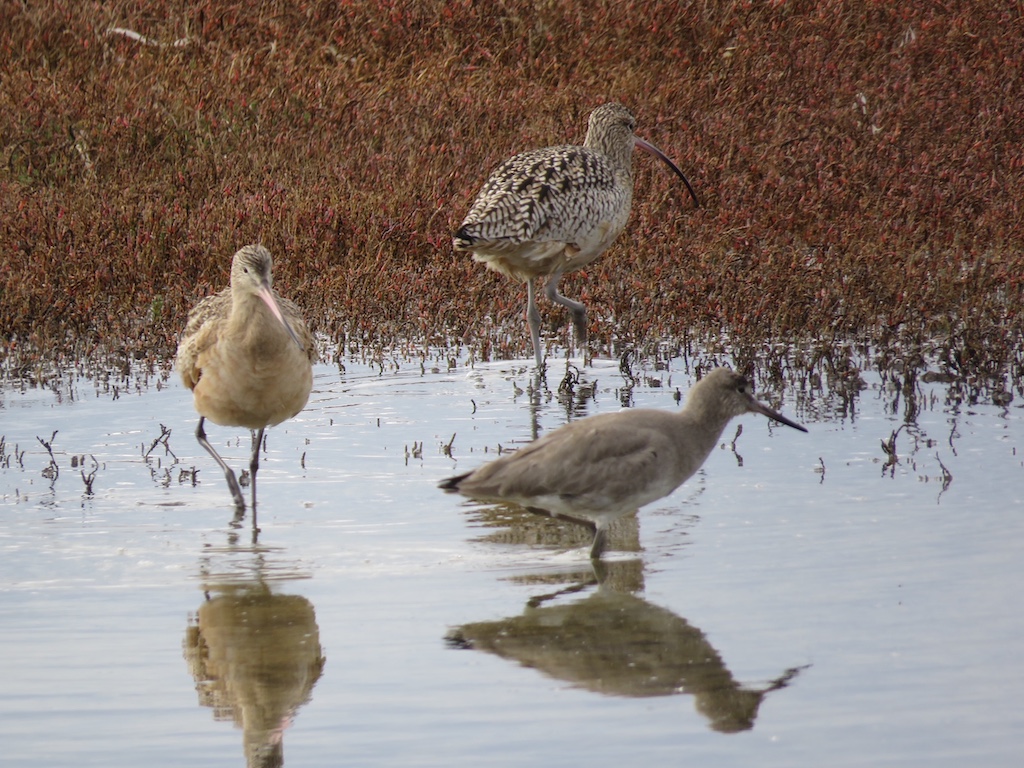
Long-billed Curlew, Marbled Godwit and Willet by Peter Nagayama
When: Wednesday, May 24, 2023
Time: 10:00 am – 12 noon on the Boat
12 noon – 1 pm Birding on the Shore
1:00 pm Lunch
Cost: $40 per person (NON-REFUNDABLE)
(If the event is canceled due to 18 person minimum not being met a refund will be issued)
Join FAS and Monterey Bay Eco Tours on a one-of-a-kind, electric powered catamaran ride for birding and a naturalist led wildlife tour along one of California’s largest tidal waterways, the Elkhorn Slough. Along with the many species of birds that inhabit the slough, we hope to see otters (and pups!) as well as Harbors seals, and other marine mammals. Friends, family, and all ages are welcome, but seating is limited, so please register early.
This is an out of town trip starting at 10:00 am, so you can either stay the night before nearby (Watsonville is the most economical) or leave Fresno to arrive before 10:00. After the catamaran ride we will bird the Moss Landing North Jetty and State Beach eBird Hotspot and then go to an optional lunch at Phil’s Fish Market before returning home.
Please Note: Registration Closes Wednesday, April 26, 2023
Where: 10932 Clam Way
Moss Landing, CA 95039
Cost: $40 per person (NON-REFUNDABLE)
(If the event is canceled due to 18 person minimum not being met a refund will be issued)
Contact: Maureen Walsh
mewnew10@yahoo.com
(559) 706-4980
Checklist: binoculars, bird guide, water, layered clothing and sun protection.

Field Trip Schedule
This schedule is subject to change due to cancelations. Check the FAS events calendar for the latest information: https://fresnoaudubon.org/events.

March Field Trip Reports
8 March 2023⏤Kings River Raptor Trail by Clayton Dahlen

From the Archives
Editor’s Note
The article below is by Jeff Davis and explains the reasoning behind his Fresno-Madera Birds column. It was originally published in January 2004 just after Jeff took over the Bird Sightings column from Kevin Enns-Rempel. Note that the link at the end of the article to the checklist of birds for Fresno and Madera counties has been updated to the current link.
Fresno-Madera Birds
by Jeff Davis
January 2004
You may have noticed a few changes to this column. With the last issue, I took over for Kevin Enns-Rempel who dutifully and thoughtfullyprepared the column for about two years (thank you Kevin!). As the new compiler I’ve changed the format. The column’s new title reflects its scope:birds observed in Fresno and Madera counties. The Fresno Audubon Society (FAS) for years has focused on these two counties and it seems natural to continue. Most of us live here, and thus bird here more than elsewhere, and other bird groups do not adequately cover the region. When I Ieft Fresno County in 1987 there was an average of 100 persons per square mile. When I returned in 2002, the average had swelled to about 140 persons per square mile—a 40 percent increase in population density. Although perhaps not as dramatic, the same sort of growth has occurred in Madera County. And while our population in both continues to grow, bird habitats—and consequently populations of many t›ird species continue to shrink. Focusing our coverage will help us to better document these changes.
Birds in this column now appear in taxonomic order rather than a chronological one. If you regularly use a field guide or checklist you willbe familiar with the basic sequence and should find it easier to quickly locate and track a species of interest. For example, you can easily see below that the two adult Ross’s Geese that Kris McNew reported on November 23 were present at least through December S. The observer’s initials (in thiscase KM) now appear next to the bird he reported. Including full names worked well in the chronological format but is awkward in a taxonomic one. However, with observer names now together at the bottom of the page, it is easier to quickly see who reported birds during the period. I hopethese changes will help us learn more about the birds of these two counties.
The success of this column depends on you, the observers. And thank you all for contributing reports. Keep them coming! You may have wondered which observations you make are especially noteworthy, which ones would help us to better understand and document the status of birds in our area. In general, these include seasonal arrival and departure dates of migrants, birds found out of season or away from usual habitats or elevation, unusually high counts or absence whenand where a species was expected, and unusual behaviors. Those species listed as rare or accidental on the FAS checklist of “The Birds of Fresnoand Madera Counties,” and any bird not on this list, are especially worth reporting (see https://fresnoaudubon.org/wp-content/uploads/2019/08/Checklist-of-the-birds-of-Fresno-and-Madera-Counties_August-2019.xlsx). Breeding records too, of any species, also areimportant and particularly worth reporting.

Fresno-Madera Birds
by Jeff Davis
Including reports for the period of
February 16, 2023 to March 15, 2023
Madera County’s first White-winged Scoter discovered at Bass Lake December 29 lingered well into February, with observations on the 17th (ph. GW) and the 23rd (NJ).

Sandhill Crane is typically scarce in our area, with small numbers generally restricted to the vicinity of Mendota. Not so this period, with 500 over Chestnut Ave south of Fresno March 9 (SH), 160 over southeast Fresno March 12 (AG), 200 over central Fresno also on March 12 (ph. KC), and 200 over Dakota Ave west of Fresno March 17 (JF), all flying northwest.
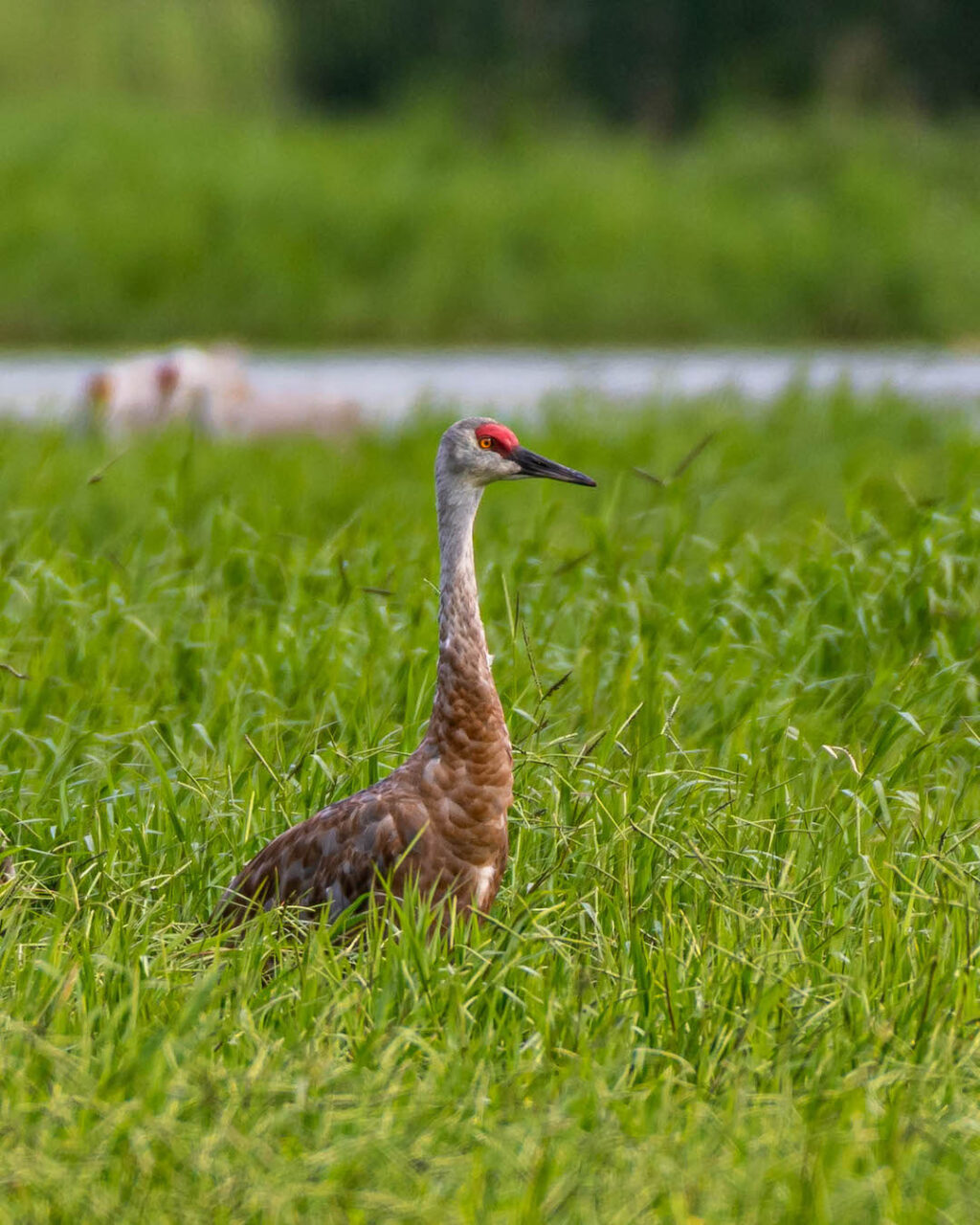
Cited Observers: George Folsom, Josh McLaughlin, Rick Saxton, Lowell Young, Gary Woods. ph. = photographed by.
If you make an interesting observation, we’d love to hear about it. We are especially interested in birds listed as casual or rare on the Fresno Audubon checklist and those found out of season, out of normal habitat, or in unusually large numbers. Please submit reports to eBird, the Fresno County Birders e-mail list, or Jeff Davis (jndavis@ucsc.edu).

Member Photographs
Lorraine Bittner
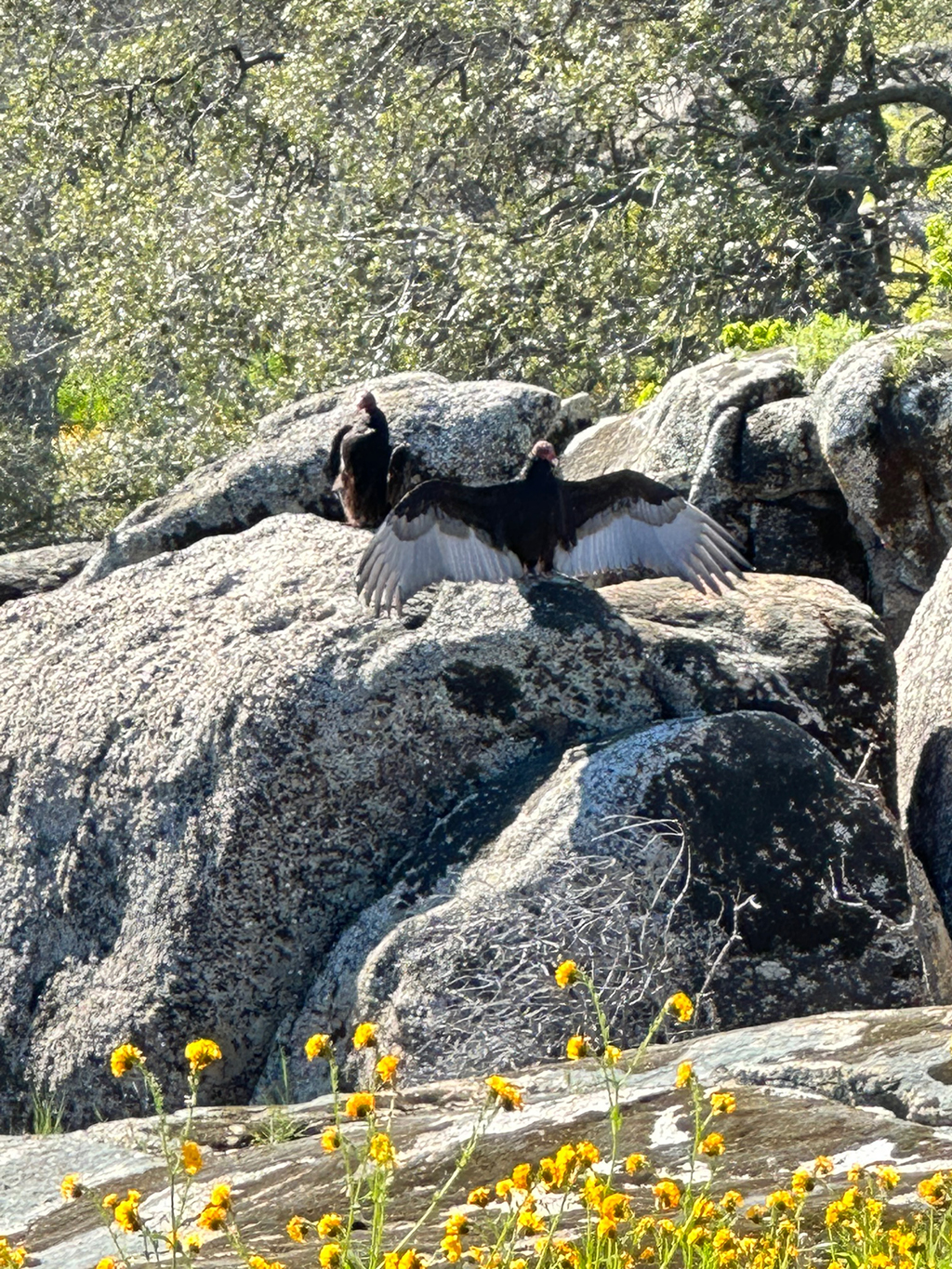
Pat Cassen
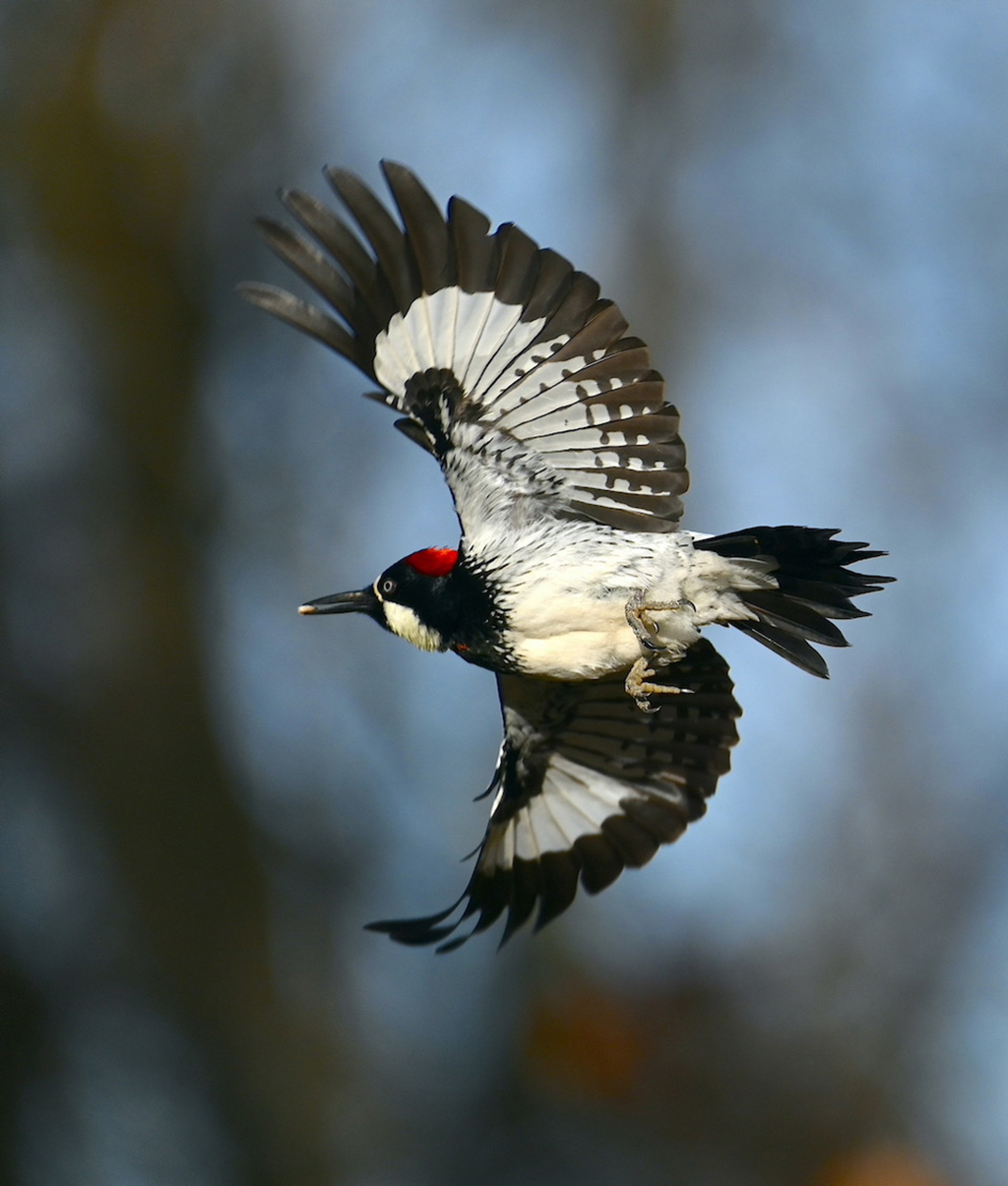
Larry Cusick
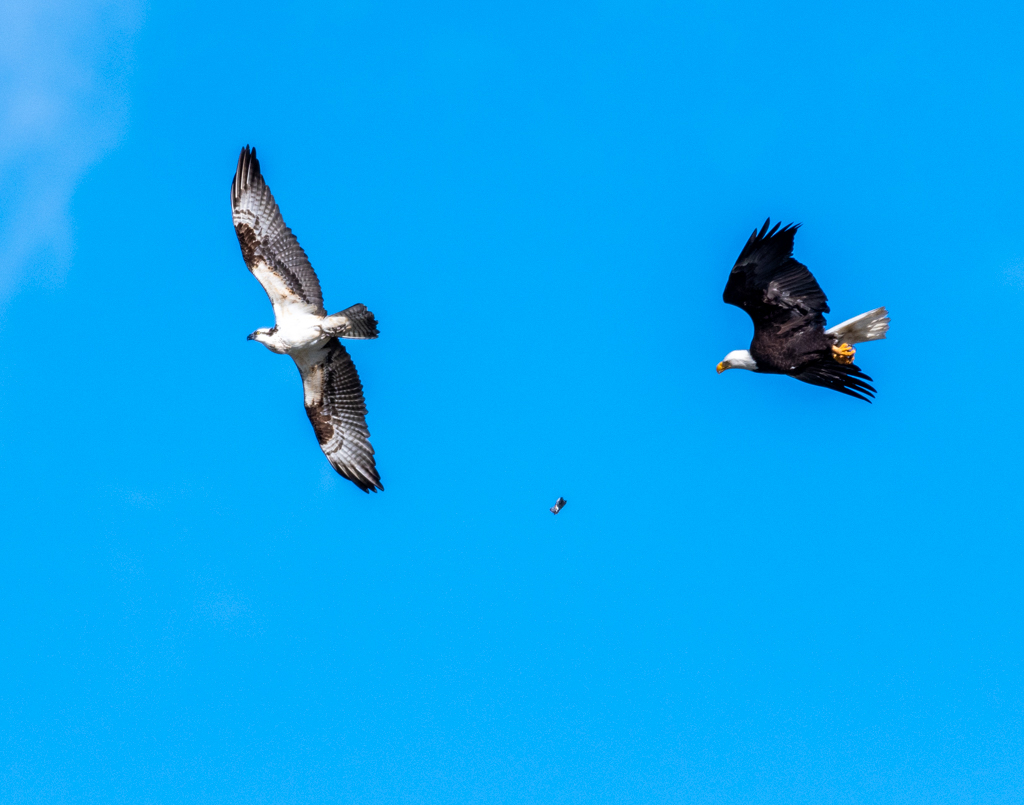
Jim Curnyn
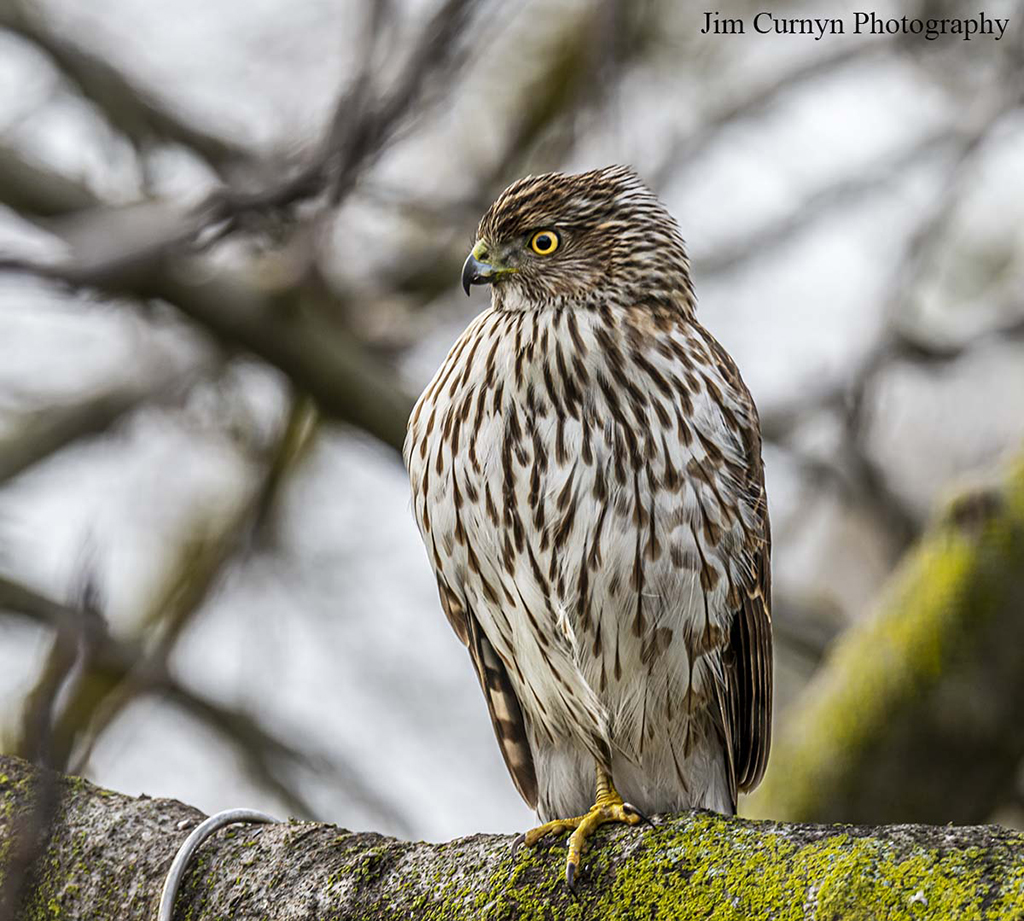
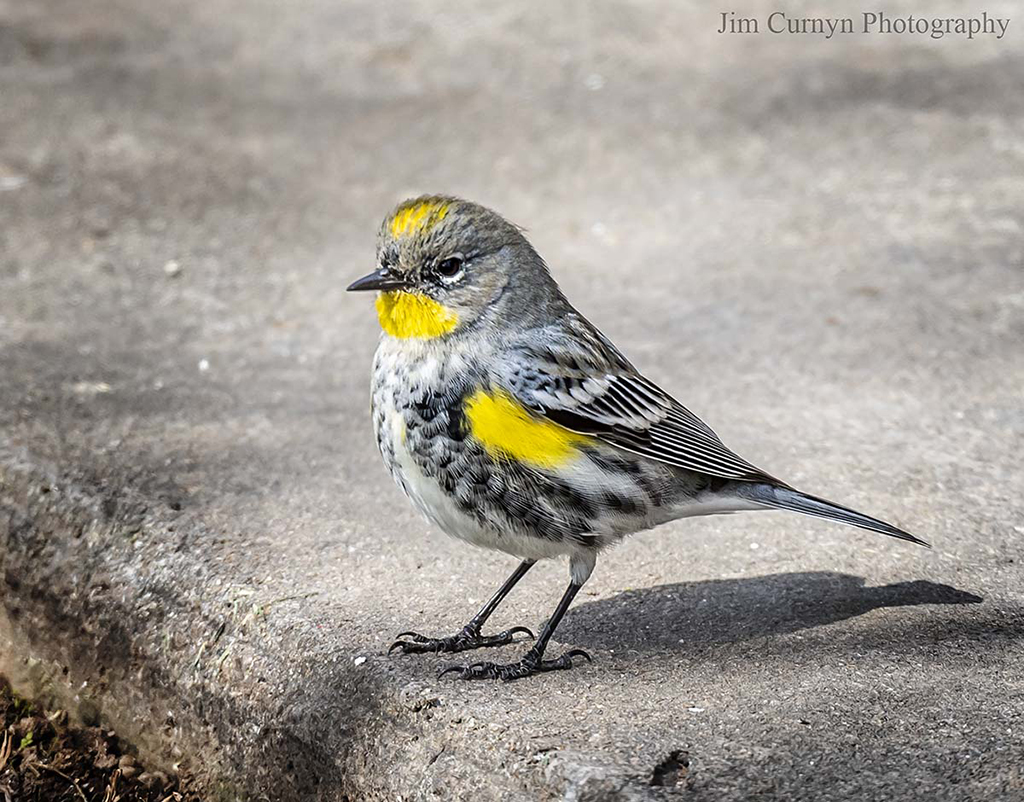
James Fleck
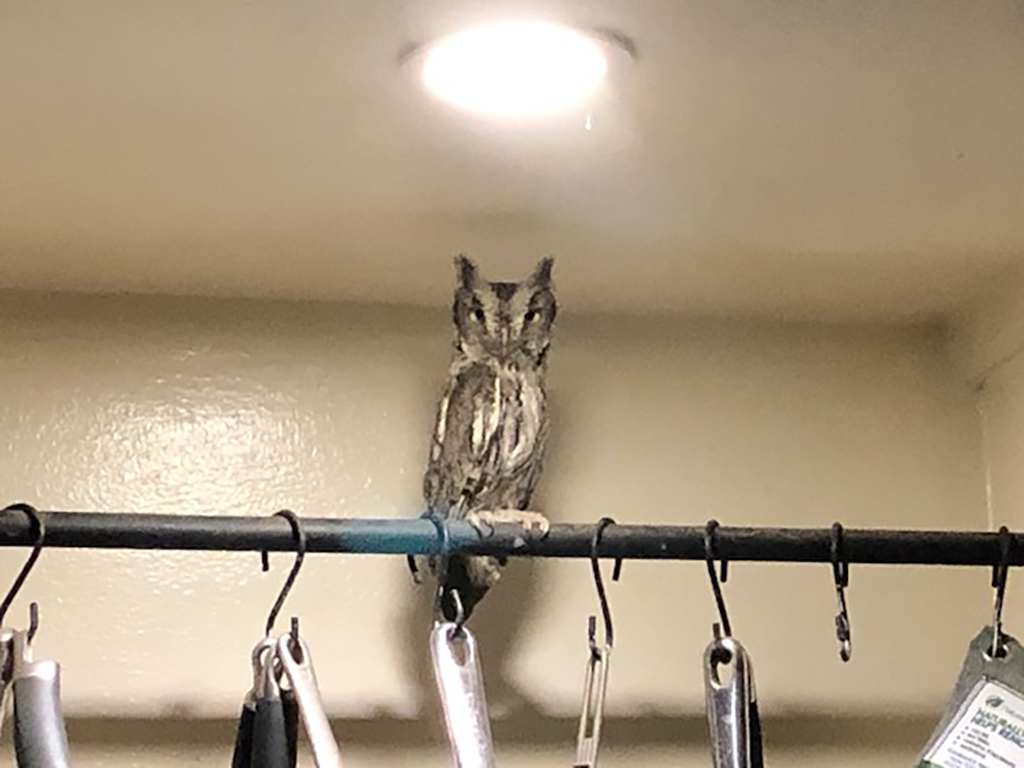
Ashby Fristoe

Charles Peck
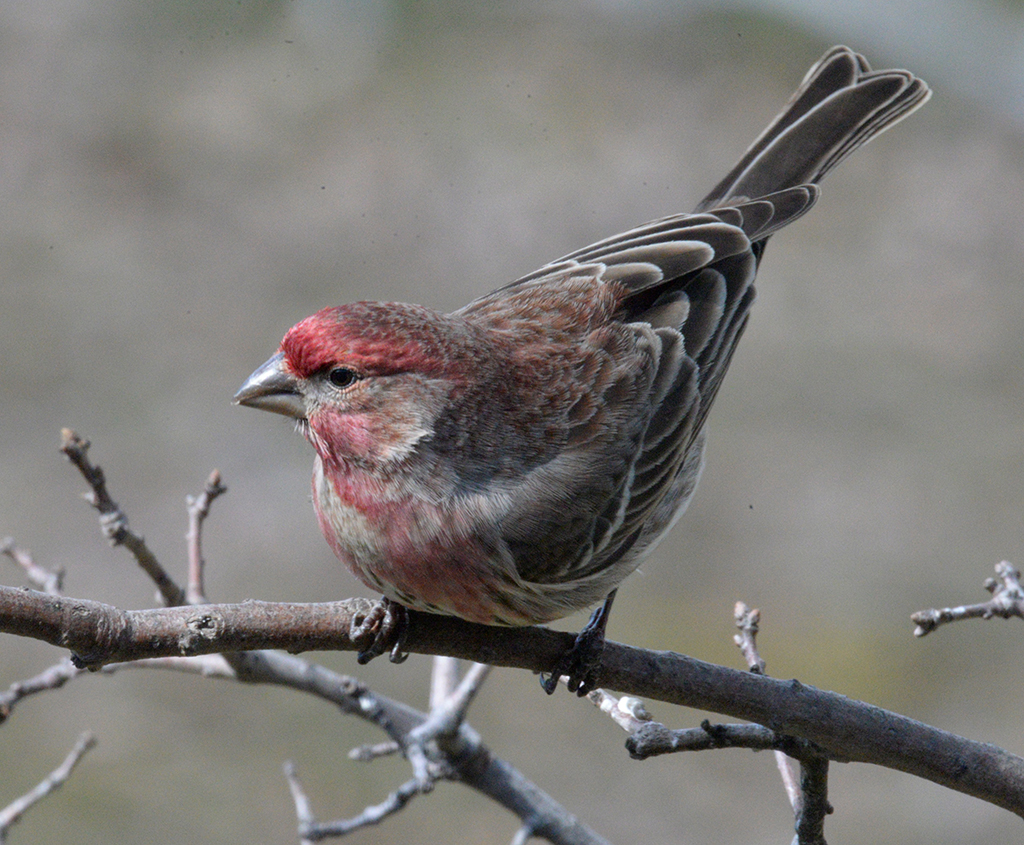
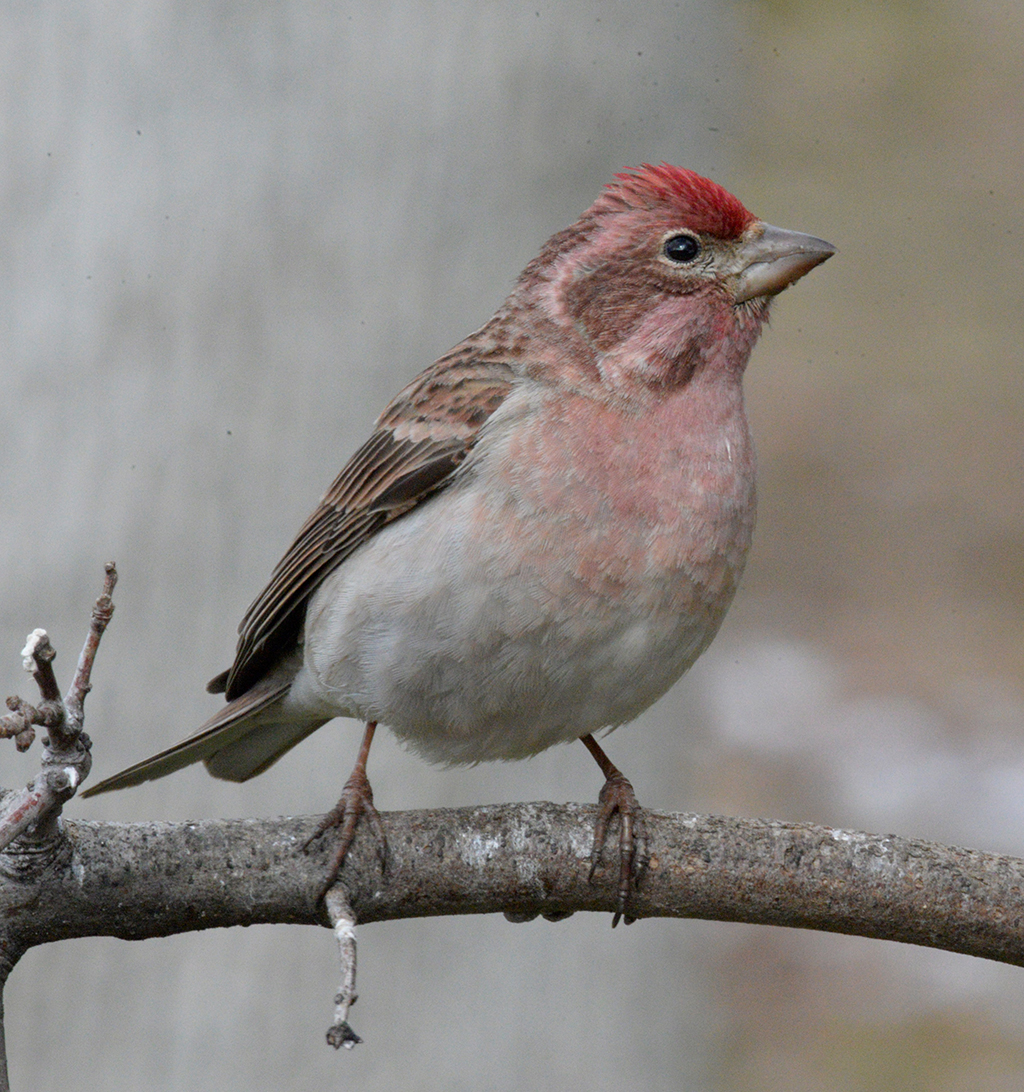
Nina Jones
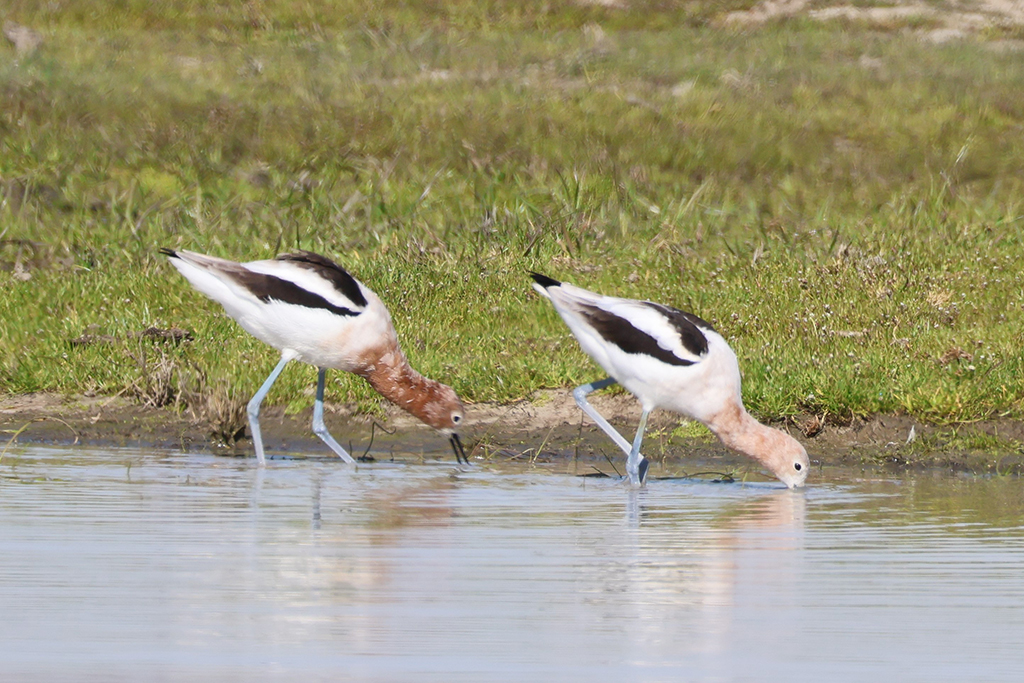
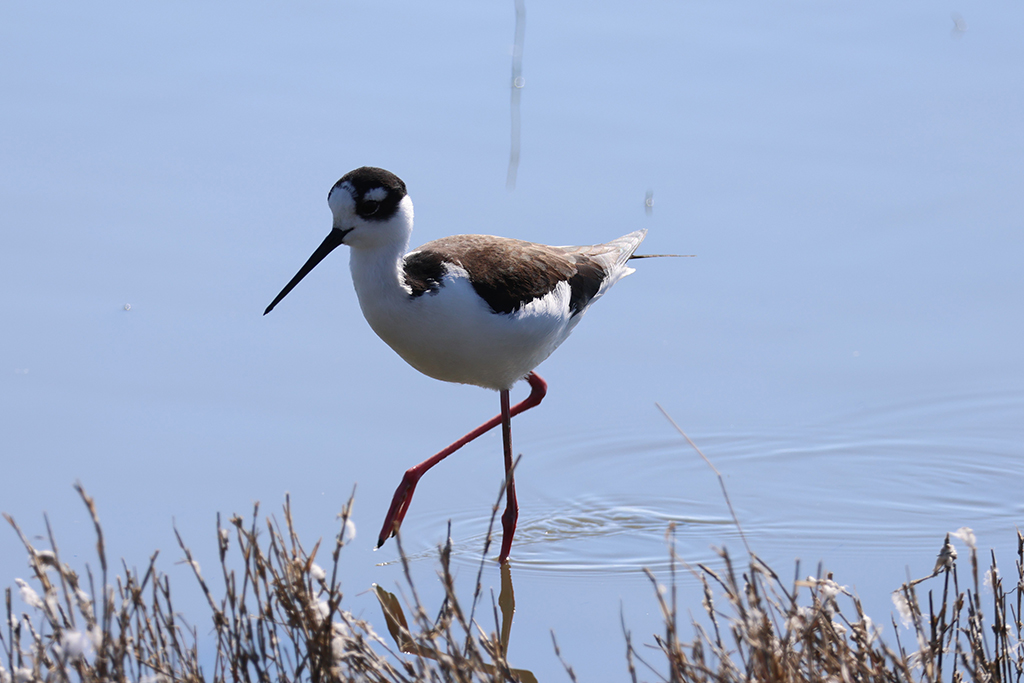
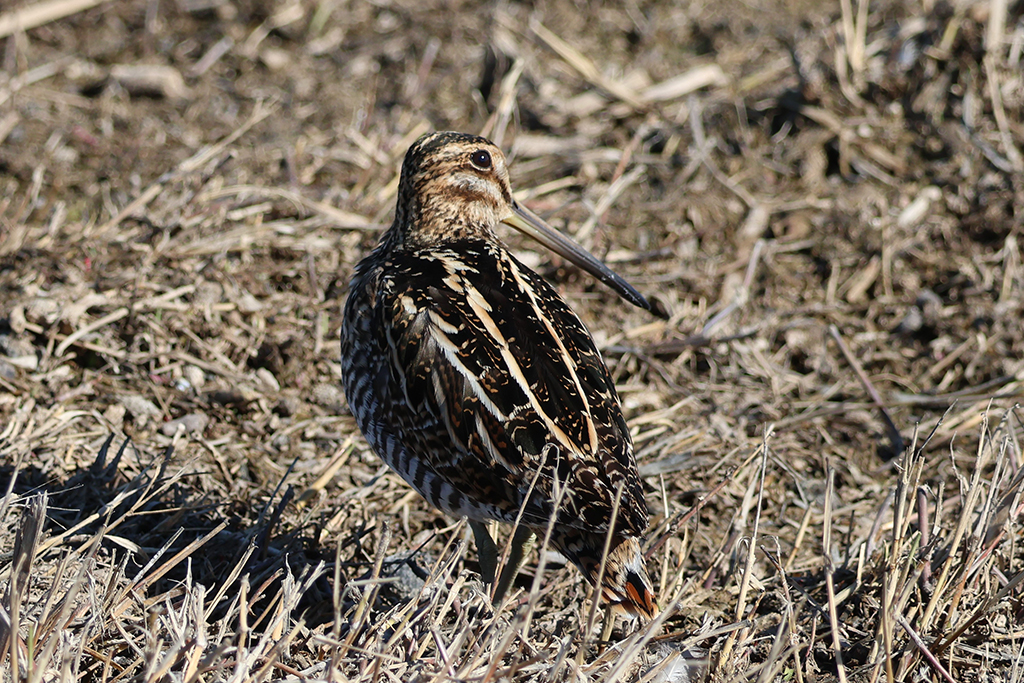
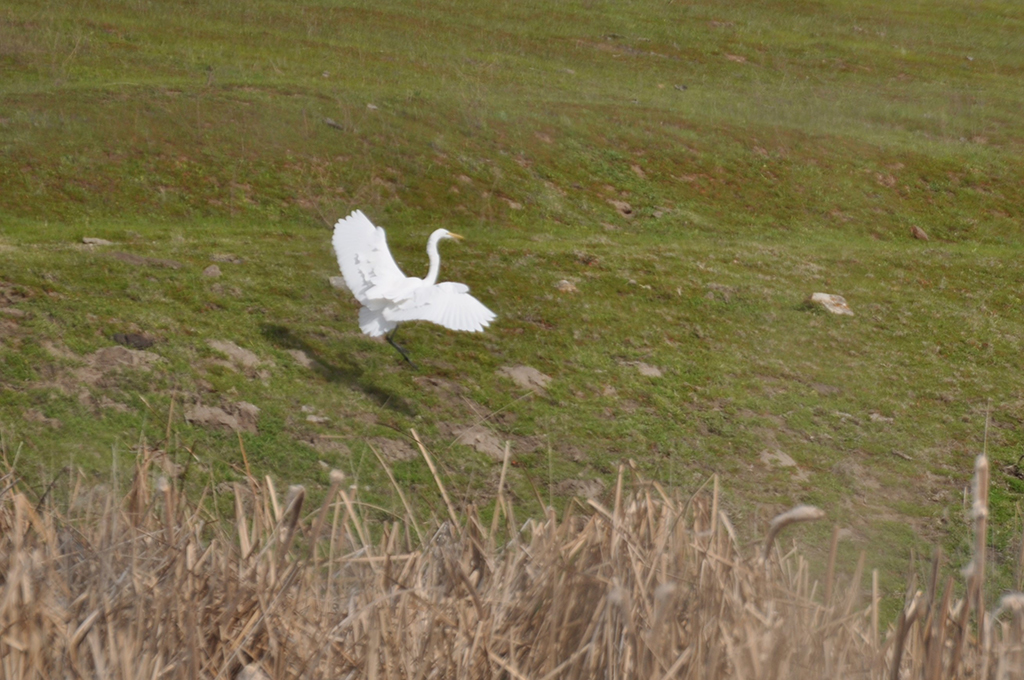
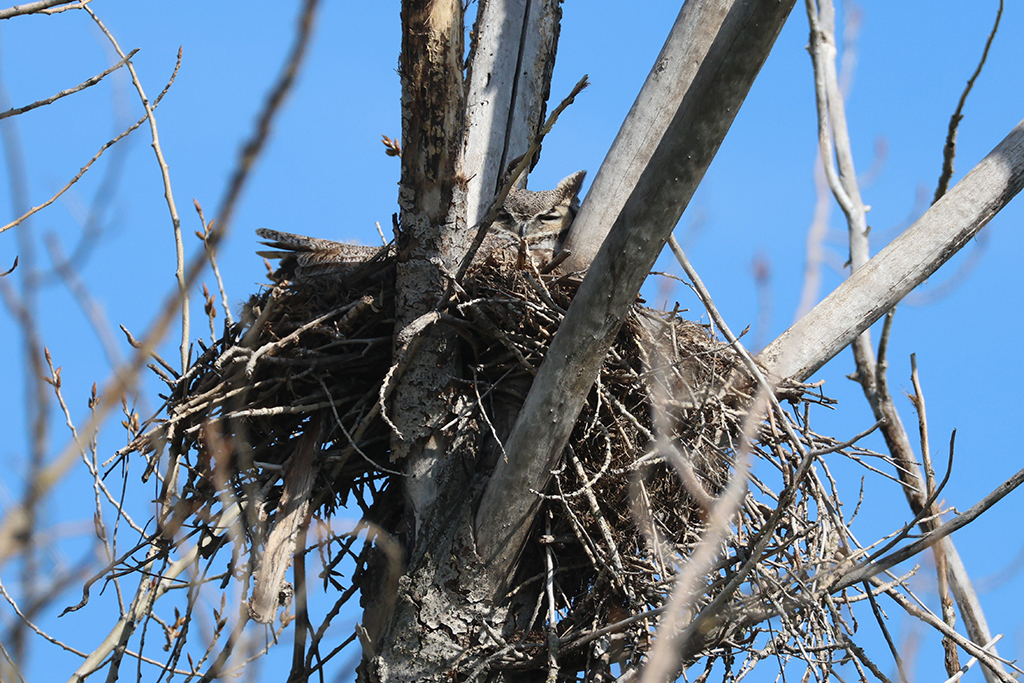

Birds in the News
Links to Recent Articles on Birds
Third Spotted Owl subspecies will (finally) receive Endangered Species Act protection
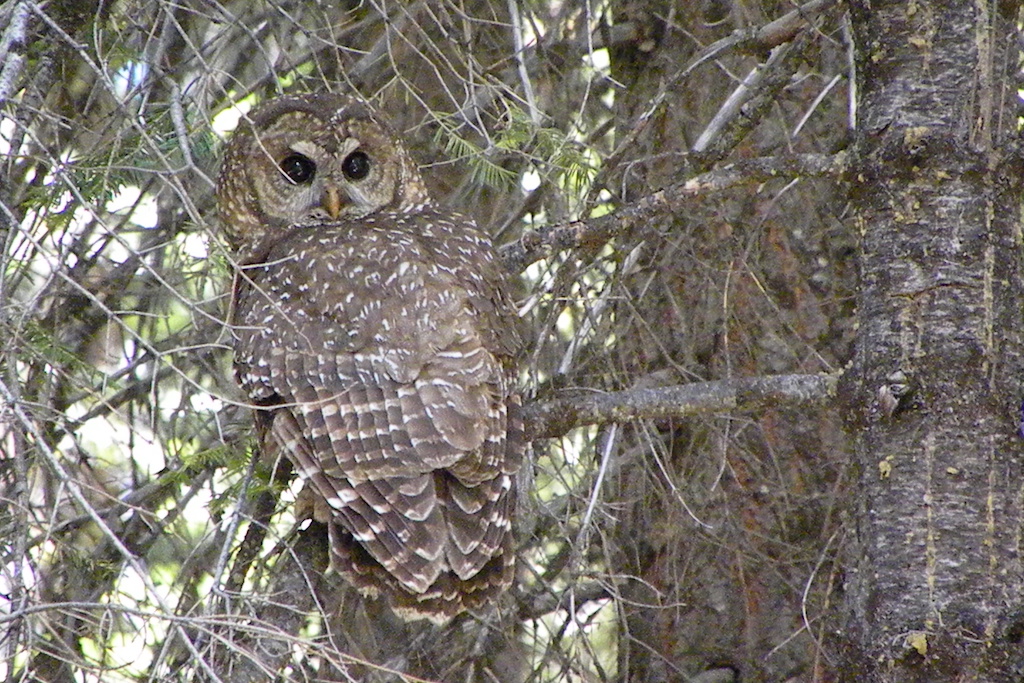
The U.S. Fish and Wildlife Service announced this week that it will protect the California Spotted Owl under the Endangered Species Act. The move comes 33 years after the Northern Spotted Owl was listed as threatened (in June 1990) and 30 years after the Mexican Spotted Owl received the same designation (in March 1993).
How birds got their wings
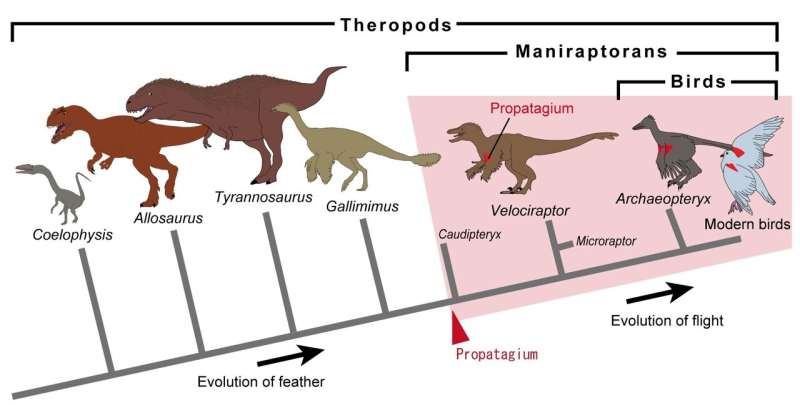
Modern birds capable of flight all have a specialized wing structure called the propatagium without which they could not fly. The evolutionary origin of this structure has remained a mystery, but new research suggests it evolved in nonavian dinosaurs. The finding comes from statistical analyses of arm joints preserved in fossils and helps fill some gaps in knowledge about the origin of bird flight.
Study analyzes avian cross-country biodiversity changes over a year

There is much more to avian biodiversity in the United States than the number of different species living in a given region or community, but the diversity of birds’ ecosystem contributions—assessed through measures of their diet, body structure and foraging methods—are much tougher to study. And with hundreds of species migrating south for the winter and north for summer breeding, birds’ ecosystem function patterns change over space and time—creating a serious analytical challenge.
Migratory birds take breaks to boost their immune system
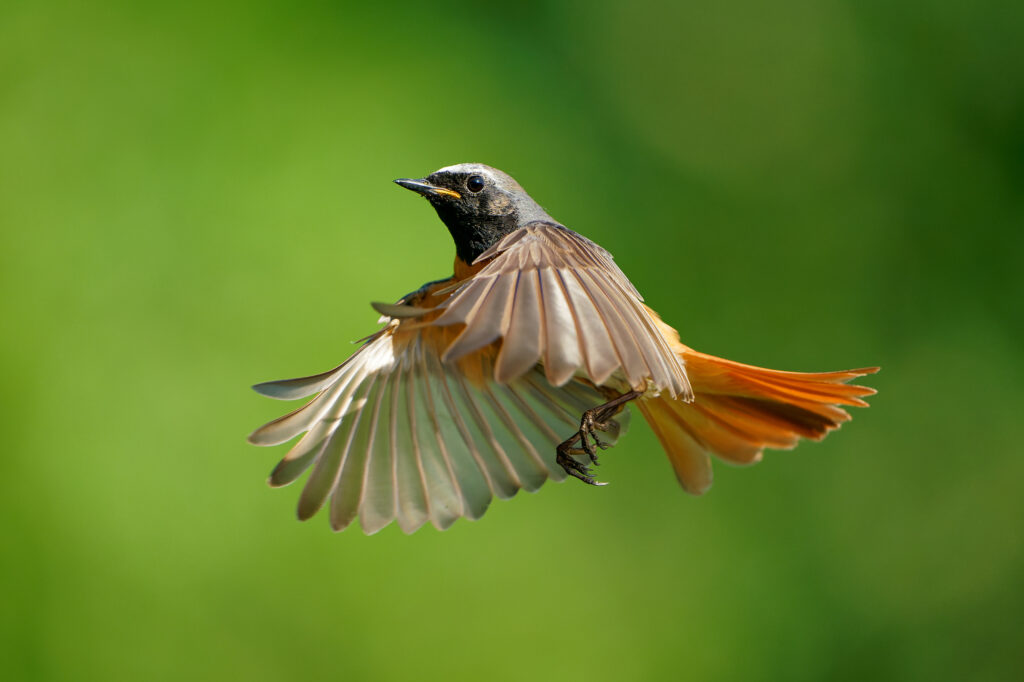
Exercising too much and not getting enough rest is bad for your health. A new study from Lund University in Sweden shows that the same is true for migratory birds. They need to rest not only to renew their energy levels but also to boost their immune system. After a period of physical exertion, vertebrates, including humans, usually need a period of recovery. Apart from the obvious — lowering the heart rate and repairing injured muscles — other, less prominent physiological systems might also need to recover. Intensive physical activity can affect an individual’s basic immune defense.
In Florida, an invasive snail is helping save an endangered bird
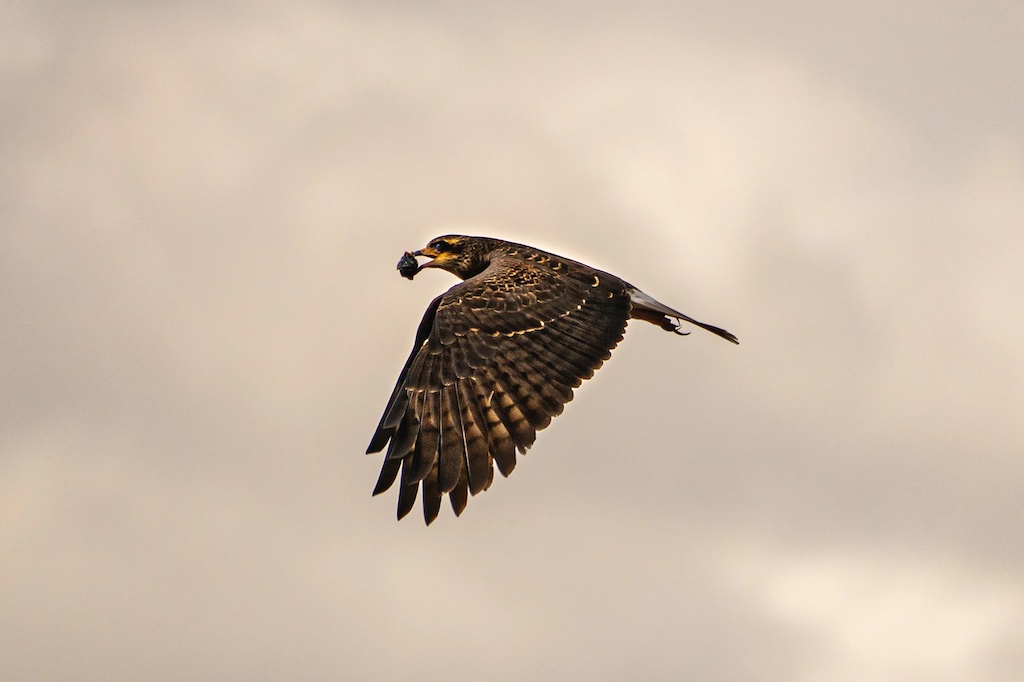
MOORE HAVEN, Fla. — In Florida’s Everglades, few species are more closely tied to the habitat’s health than an endangered bird, the snail kite. The Everglade snail kite is a raptor, similar to a hawk, that eats just one thing: snails. Over the last century, as much of the Everglades was drained, the bird’s population declined precipitously. But the kite has bounced back recently thanks to an exotic snail. It’s a rare case of an invasive species having a positive impact.
The beginner’s guide to bird-watching
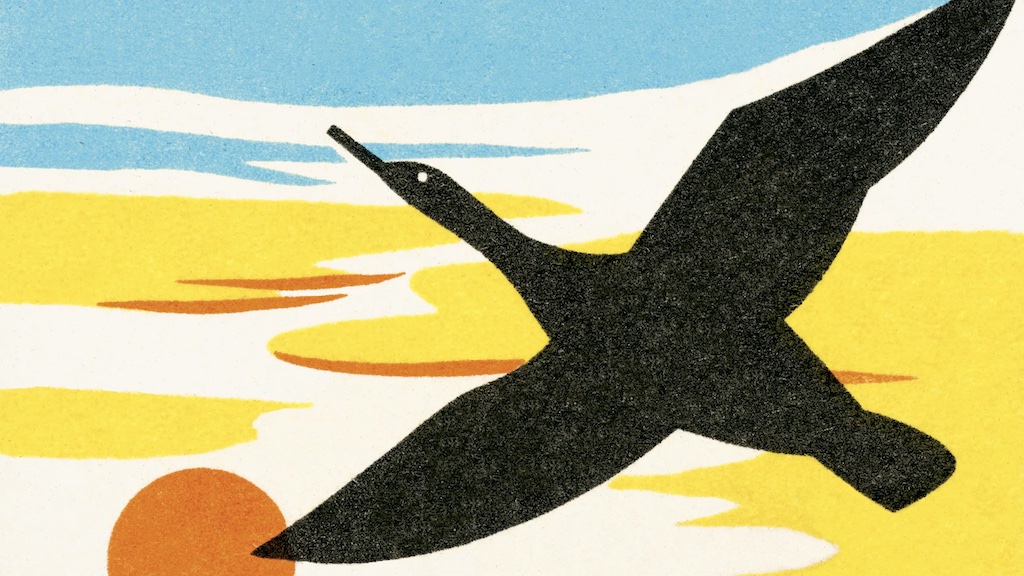
NYC Audubon Society changing name due to ‘white supremacy’ legacy

They’re bidding it Audu-bon voyage. After months of deliberation, New York City Audubon decided to change its name, citing founder John James Audubon’s legacy of white supremacy. The ornithology-devoted organization announced the bombshell development on its website and in an email sent to members. “NYC Audubon’s Board of Directors has today announced its decision to change the organization’s name, dropping ‘Audubon,’ ” NYC Audubon Executive Director Jessica Wilson wrote in the email to supporters.
Birds sometimes hitch rides on ships—and it’s changing the way they migrate
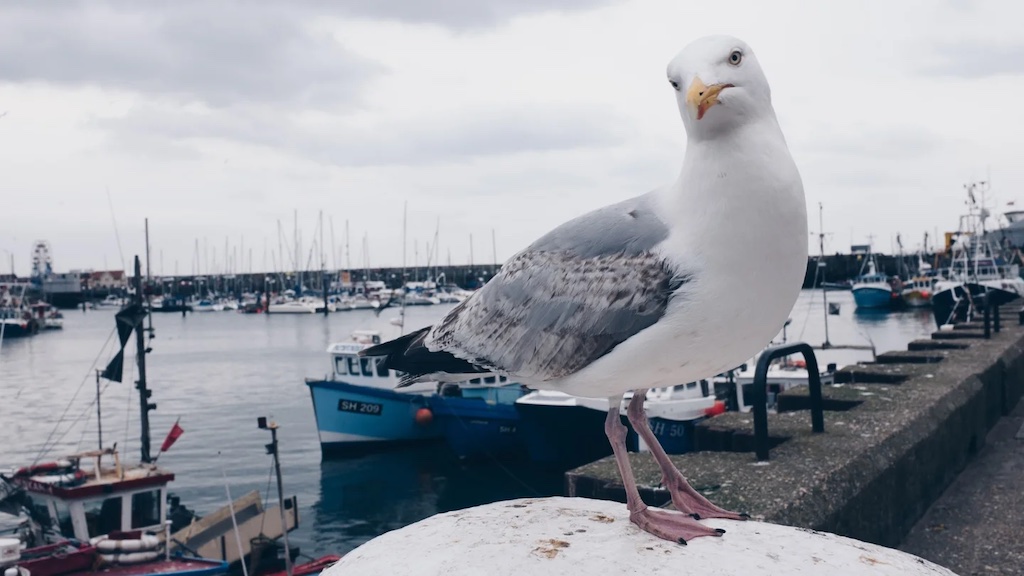
Last fall, hundreds of birders rushed to Bryher, a tiny island off the coast of Cornwall, England. They came to see a Blackburnian warbler, a bird with a flaming orange throat and a high-pitched, trilled song. Blackburnian warblers are hardly ever seen in the United Kingdom—their home is 4,800 kilometers away in the pine forests of North America. Though they’re adept fliers, these birds typically overwinter in South America. So how did the bird get to Bryher?
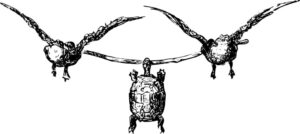
Membership
Fresno Audubon’s (FAS) annual membership year runs from September 1st through August 31. Thank you to all of you who generously support Fresno Audubon by paying annual membership dues. Your support makes it possible for FAS to host outstanding speakers on our Zoom General Meetings, maintain our website, conduct guided field trips, teach introductory birding classes, maintain the bird feeding station at the River Center, conduct multiple bird surveys, and advocate for regional and local bird-related issues. To learn more about our work, download our 2020 Annual Report.
FAS members also have exclusive access to the FAS Birding Resource Guide, an online compilation of Central Valley birding resources, and new members receive a FAS sticker that displays the Fresno Audubon logo and website.
Fresno Audubon Society membership levels are:
$15 Student
$25 Individual
$35 Family
$1000 Golden Eagle (Life)
Fresno Audubon Society
PO Box 3315
Fresno, CA 93650
Thank you for your continuing support of Fresno Audubon Society!


Sorry, the comment form is closed at this time.